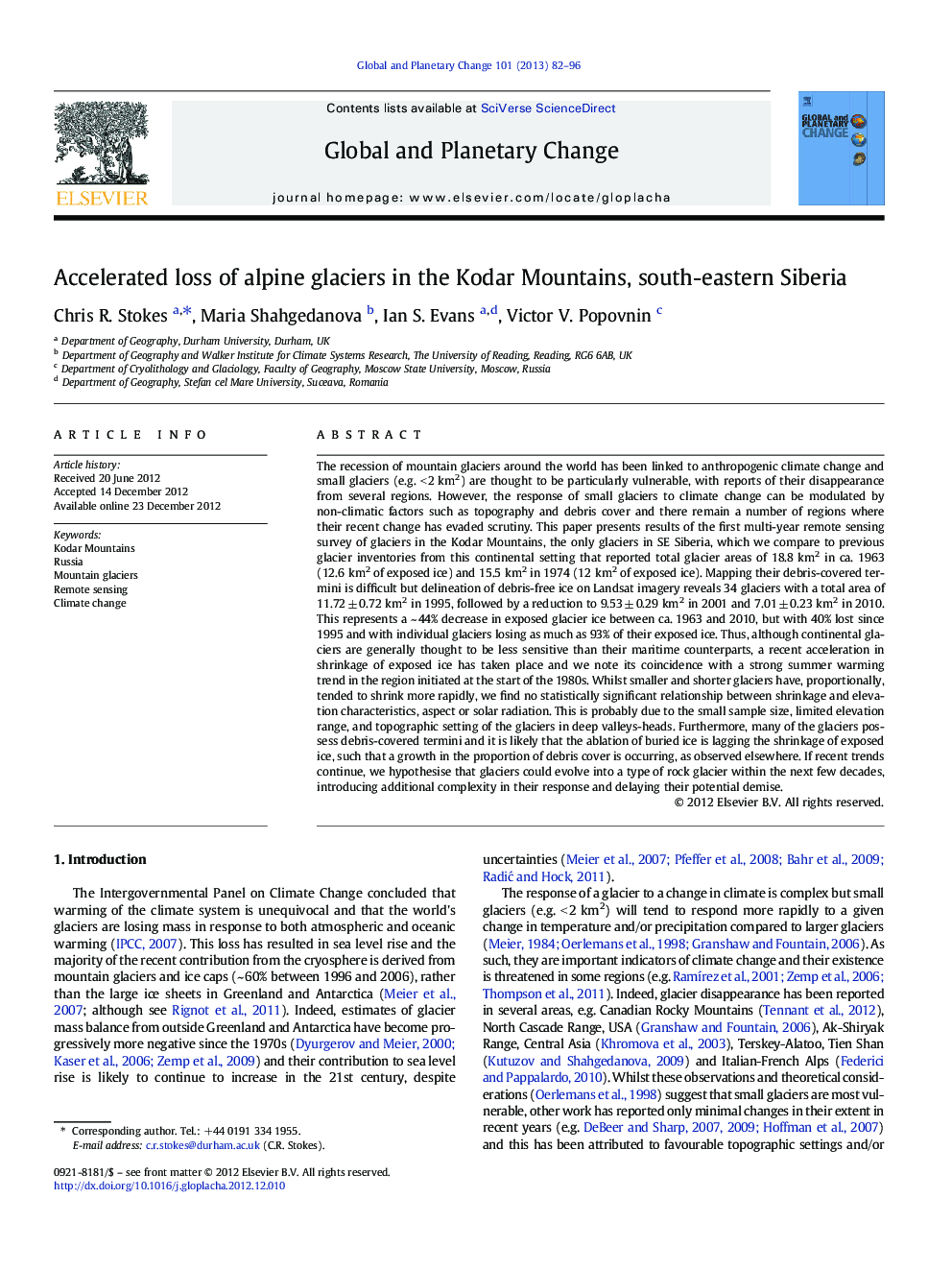| کد مقاله | کد نشریه | سال انتشار | مقاله انگلیسی | نسخه تمام متن |
|---|---|---|---|---|
| 4463471 | 1621680 | 2013 | 15 صفحه PDF | دانلود رایگان |

The recession of mountain glaciers around the world has been linked to anthropogenic climate change and small glaciers (e.g. < 2 km2) are thought to be particularly vulnerable, with reports of their disappearance from several regions. However, the response of small glaciers to climate change can be modulated by non-climatic factors such as topography and debris cover and there remain a number of regions where their recent change has evaded scrutiny. This paper presents results of the first multi-year remote sensing survey of glaciers in the Kodar Mountains, the only glaciers in SE Siberia, which we compare to previous glacier inventories from this continental setting that reported total glacier areas of 18.8 km2 in ca. 1963 (12.6 km2 of exposed ice) and 15.5 km2 in 1974 (12 km2 of exposed ice). Mapping their debris-covered termini is difficult but delineation of debris-free ice on Landsat imagery reveals 34 glaciers with a total area of 11.72 ± 0.72 km2 in 1995, followed by a reduction to 9.53 ± 0.29 km2 in 2001 and 7.01 ± 0.23 km2 in 2010. This represents a ~ 44% decrease in exposed glacier ice between ca. 1963 and 2010, but with 40% lost since 1995 and with individual glaciers losing as much as 93% of their exposed ice. Thus, although continental glaciers are generally thought to be less sensitive than their maritime counterparts, a recent acceleration in shrinkage of exposed ice has taken place and we note its coincidence with a strong summer warming trend in the region initiated at the start of the 1980s. Whilst smaller and shorter glaciers have, proportionally, tended to shrink more rapidly, we find no statistically significant relationship between shrinkage and elevation characteristics, aspect or solar radiation. This is probably due to the small sample size, limited elevation range, and topographic setting of the glaciers in deep valleys-heads. Furthermore, many of the glaciers possess debris-covered termini and it is likely that the ablation of buried ice is lagging the shrinkage of exposed ice, such that a growth in the proportion of debris cover is occurring, as observed elsewhere. If recent trends continue, we hypothesise that glaciers could evolve into a type of rock glacier within the next few decades, introducing additional complexity in their response and delaying their potential demise.
► First ever multi-year study of glacier change from the Kodar Mountains, SE Siberia.
► Small decline in glacier area from the 1960s to 1995 followed by dramatic reduction.
► Reduction coincides with a marked summer warming trend that began in the 1980s.
► Topography and supra-glacial debris cover modulate glacier response.
► These glaciers may transition into a type of rock glacier within a few decades.
Journal: Global and Planetary Change - Volume 101, February 2013, Pages 82–96